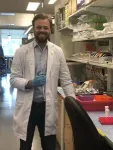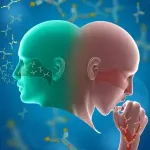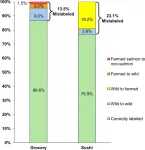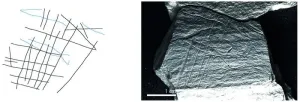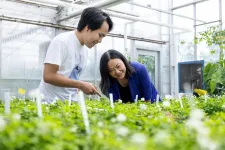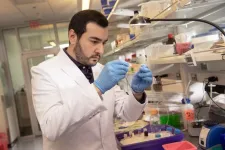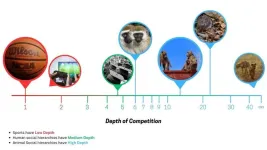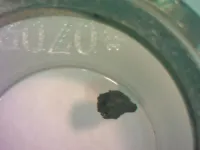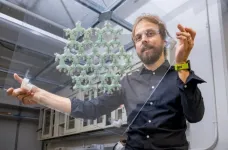(Press-News.org) Wastewater treatment fails to kill several human pathogens when they hide out on microplastics in the water, reports a new study led by Ingun Lund Witsø of the Norwegian University of Life Sciences, published November 6, 2024 in the open-access journal PLOS ONE.
Wastewater treatment plants are designed to remove contaminants from wastewater, but microplastics persist and can become colonized by a sticky microbial biofilm. Previous research has suggested that these microbial communities, called plastispheres, include potential pathogens, and thus might pose a risk to human health and the environment when treated wastewater and sludge are released.
In the new study, researchers identified food-borne pathogens in plastispheres living on three types of plastic in wastewater. They cultured the microorganisms and used genetic techniques to understand the diversity and members of the plastisphere communities. The team found evidence of pathogenic bacteria and viruses, including Listeria monocytogenes, Escherichia coli, norovirus and adenovirus. They also successfully grew Klebsiella pneumoniae and Acinetobacter spp. from raw and treated wastewater, indicating that the plastisphere biofilms likely protect the pathogens from wastewater treatment.
These findings highlight the potential of plastispheres to harbor and spread pathogens, which poses a challenge to safely reusing wastewater. Without efficient wastewater treatment and plastic waste management, wastewater could act as a vehicle for transferring plastic-associated pathogens into the food chain. The researchers emphasize that continued research and innovation are essential to remove microplastics – and their pathogens – from wastewater.
The authors add: “Plastics in wastewater treatment plants are colonized by microbial biofilms, or “plastispheres,” which can harbor pathogens, including Listeria, E. coli, Klebsiella pneumoniae, and Acinetobacter spp., that persist through treatment processes. This study highlights the potential for plastispheres to contribute to the spread of pathogens from treated wastewater, posing challenges for environmental health and water reuse efforts.”
#####
In your coverage please use this URL to provide access to the freely available article in PLOS ONE: https://journals.plos.org/plosone/article?id=10.1371/journal.pone.0312157
Citation: Witsø IL, Basson A, Aspholm M, Wasteson Y, Myrmel M (2024) Wastewater-associated plastispheres: A hidden habitat for microbial pathogens? PLoS ONE 19(11): e0312157. https://doi.org/10.1371/journal.pone.0312157
Author Countries: Norway
Funding: This work was supported by The Norwegian Research Council grant (PLASTPATH project number 302996). The funders had no role in study design, data collection and analysis, decision to publish, or preparation of the manuscript.
END
Pathogens which cling to microplastics may survive wastewater treatment
Biofilms on microplastics appear to provide a protective environment for viruses and foodborne bacteria
2024-11-06
ELSE PRESS RELEASES FROM THIS DATE:
Effects of preterm birth extend into adulthood, study finds
2024-11-06
By analyzing all live births in Canada over a six-year period and following children for more than two decades, researchers found that preterm births and the related cognitive, development and physical health impacts of prematurity are associated with lower income, employment and university enrollment
Individuals born before 37 weeks of gestation, considered to be preterm infants, have, on average, lower employment income, university enrollment and educational attainment through age 28, according to ...
Salmon frequently mislabeled in Seattle grocery stores and sushi restaurants
2024-11-06
In a study of salmon samples from Seattle, Washington, grocery stores and sushi restaurants, DNA analysis revealed that 18 percent were mislabeled. Tracie Delgado and colleagues at Seattle Pacific University, WA, U.S., present these findings in the open-access journal PLOS ONE on November 6, 2024.
Washington State is one of the top suppliers of wild salmon eaten in the United States. The price of salmon depends on the species and whether it is farmed or wild caught. Prior studies have revealed frequent mislabeling of salmon in Washington markets and restaurants. In 2013, the state made it illegal to mislabel salmon, citing negative ...
15,800-year-old engraved plaquettes from modern-day Germany depict fishing techniques, including the use of nets, not previously known in the Upper Paleolithic
2024-11-06
15,800-year-old engraved plaquettes from modern-day Germany depict fishing techniques, including the use of nets, not previously known in the Upper Paleolithic
###
Article URL: https://journals.plos.org/plosone/article?id=10.1371/journal.pone.0311302
Article Title: Upper Palaeolithic fishing techniques: Insights from the engraved plaquettes of the Magdalenian site of Gönnersdorf, Germany
Author Countries: Germany, U.K.
Funding: Deutsche Forschungsgemeinschaft DFG (Germany) - AHRC (UK) Memorandum of Understanding Grant DFG-Projekt GZ: GA 683/13-1 (AOBJ: 647648); AHRC (UK) AH/V002899/1) Kunst und Haushalt im Paläolithikum: ...
How plants evolved multiple ways to override genetic instructions
2024-11-06
Biologists at Washington University in St. Louis have discovered the origin of a curious duplication that gives plants multiple ways to override instructions that are coded into their DNA. This research could help scientists exploit a plant’s existing systems to favor traits that make it more resilient to environmental changes, like heat or drought stress.
The study led by Xuehua Zhong, a professor of biology in Arts & Sciences, was published Nov. 6 in Science Advances.
Zhong’s new research focuses on DNA methylation, a normal biological process in living cells wherein small chemical groups called methyl ...
Nasal swab tests predict COVID-19 disease severity, Emory study finds
2024-11-06
A wide variety of COVID-19 symptoms exist, ranging from mild to severe, and while current strains of the virus generally cause milder symptoms, those with co-morbidities are still at an exponentially greater risk of severe disease. Now, new research from Emory University is providing a more precise prediction of COVID-19 severity that can be found by looking at autoantibodies in the nasal cavity, leading to more personalized treatment plans. For high-risk individuals, this could provide critical information to inform immediate treatment options, including ...
'Shallow' sports and 'deep' social hierarchies: Not all pecking orders are created equal
2024-11-06
University of Michigan researchers have added a new dimension to the mathematics used to predict the outcomes of all manner of competitions, including sports, games and social hierarchies in both humans and animals.
This dimension, which they call "depth of competition," can be integrated into a variety of important and lucrative fields. It could, for instance, help project winners of match-ups in sports, forecast consumer preferences, rank universities and evaluate hiring practices.
But it also ...
New PFAs testing method created at UMass Amherst
2024-11-06
AMHERST, Mass. — University of Massachusetts Amherst researchers have discovered a new way to detect per- and polyfluoroalkyl substances (PFAS) in water. This marks an important step forward in creating testing devices that are simpler, more cost-effective, faster and generally more accessible than existing methods.
PFAS, the so-called forever chemicals, have been recognized as a concerning pollutant.
These chemicals persist in the environment because they resist breaking down and pose significant health threats. Exposure to these chemicals is linked to various cancers ...
Asteroid grains shed light on the outer solar system’s origins
2024-11-06
Tiny grains from a distant asteroid are revealing clues to the magnetic forces that shaped the far reaches of the solar system over 4.6 billion years ago.
Scientists at MIT and elsewhere have analyzed particles of the asteroid Ryugu, which were collected by the Japanese Aerospace Exploration Agency’s (JAXA) Hayabusa2 mission and brought back to Earth in 2020. Scientists believe Ryugu formed on the outskirts of the early solar system before migrating in toward the asteroid belt, eventually settling into an orbit between Earth and Mars.
The team analyzed Ryugu’s particles for signs of any ancient magnetic field that might have been present ...
Grant supports finding brain-inspired ways to develop low-energy computing
2024-11-06
The human brain is an astonishing organ, as any neuroscientist can attest. And its ability to collect, store, analyze and use information is intriguing to physicists, engineers and computer scientists, too.
Benjamin Jungfleisch, associate professor of physics at the University of Delaware, is among them.
Jungfleisch, who joined UD’s faculty in 2018, is an expert in magnon spintronics. He uses lasers to explore the dynamics of magnetic nanostructures — tiny magnets that can be used to ...
People engaging in self-harm find support on Reddit. But is that community helping them?
2024-11-06
A new study from the University of Georgia suggests people posting in Reddit’s r/selfharm community are likely seeking support for negative emotions.
While sharing traumatic events online can be cathartic, the researchers caution that subreddits can’t provide the same type of mental health help and support face-to-face interactions and professional help can.
“We don’t know the accuracy of the information that’s being shared in these communities about nonsuicidal self-injury,” ...
LAST 30 PRESS RELEASES:
Norbert Holtkamp appointed director of Fermi National Accelerator Laboratory
New agentic AI platform accelerates advanced optics design
Biologists discover neurons use physical signals — not electricity — to stabilize communication
Researchers discover that a hormone can access the brain by hitchhiking
University of Oklahoma researcher awarded funding to pursue AI-powered material design
Exploring how the visual system recovers following injury
Support for parents with infants at pediatric check-ups leads to better reading and math skills in elementary school
Kids’ behavioral health is a growing share of family health costs
Day & night: Cancer disrupts the brain’s natural rhythm
COVID-19 vaccination significantly reduces risk to pregnant women and baby
The role of vaccination in maternal and perinatal outcomes associated with COVID-19 in pregnancy
Mayo Clinic smartwatch system helps parents shorten and defuse children's severe tantrums early
Behavioral health spending spikes to 40% of all children’s health expenditures, nearly doubling in a decade
Digital cognitive behavioral treatment for generalized anxiety disorder
Expenditures for pediatric behavioral health care over time and estimated family financial burden
Air conditioning in nursing homes and mortality during extreme heat
The Alps to lose a record number of glaciers in the next decade
What makes a good proton conductor?
New science reporting guide published for journalists in Bulgaria
New international study reveals major survival gaps among children with cancer
New science reporting guide published for journalists in Turkey
Scientists develop a smarter mRNA therapy that knows which cells to target
Neuroanatomy-informed brain–machine hybrid intelligence for robust acoustic target detection
Eight SwRI hydrogen projects funded by ENERGYWERX
The Lundquist Institute and its start-up company Vitalex Biosciences Announces Strategic Advancement of Second-Generation fungal Vaccine VXV-01 through Phase 1 Trials under $40 Million Competitive Con
Fine particles in pollution are associated with early signs of autoimmune disease
Review article | Towards a Global Ground-Based Earth Observatory (GGBEO): Leveraging existing systems and networks
Penn and UMich create world’s smallest programmable, autonomous robots
Cleveland researchers launch first major study to address ‘hidden performance killer’ in athletes
To connect across politics, try saying what you oppose
[Press-News.org] Pathogens which cling to microplastics may survive wastewater treatmentBiofilms on microplastics appear to provide a protective environment for viruses and foodborne bacteria

